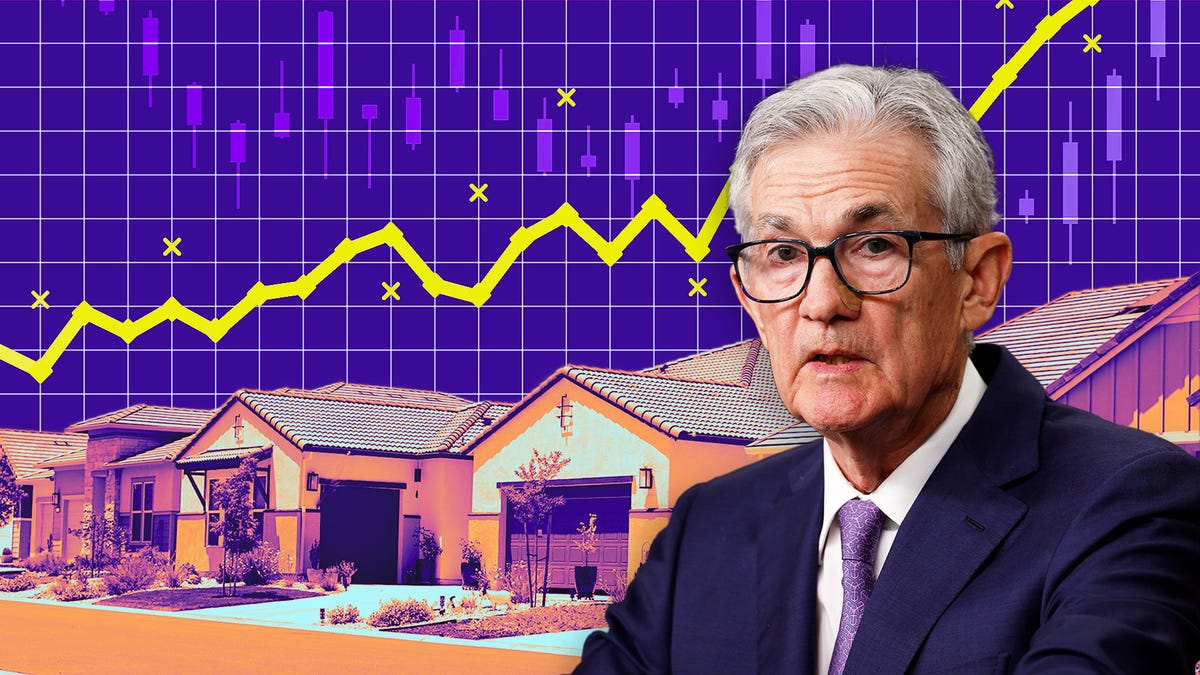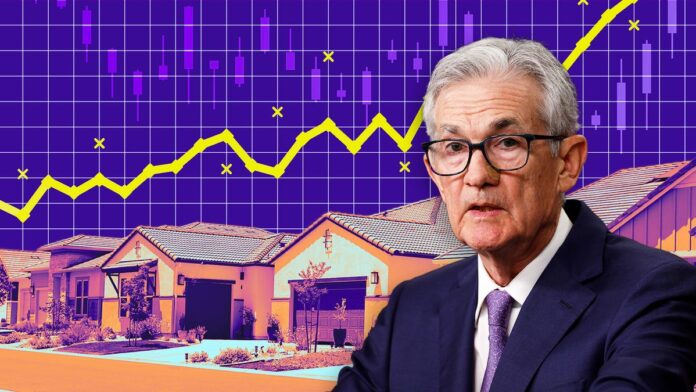
The Fed’s interest rate decisions impact mortgages, but the relationship isn’t straightforward.
There’s a wild amount of uncertainty in today’s economy, but one thing is clear: The Federal Reserve isn’t planning to lower interest rates this summer. Mortgage rates, which have been stuck near 7% for the past several months, are likely to stay higher for longer.
On June 18, Fed officials voted to leave borrowing rates unchanged for a fourth consecutive meeting. Holding interest rates where they are allows the central bank to evaluate how President Trump’s unpredictable tariff campaign, immigration policies and federal cutbacks affect both inflation and the job market.
Often, what the central bank simply says about future plans can cause a stir in the housing market. Mortgage rates are driven by bond investors and a host of other factors, i.e., not directly determined by the Fed.
“The mortgage market reacts fast to uncertainty, and we’ve got no shortage of it this summer,” said Nicole Rueth, of the Rueth Team with Movement Mortgage.
Why is the Fed not cutting interest rates?
The Fed sets and oversees US monetary policy under a dual mandate to maintain price stability and maximum employment. It does this largely by adjusting the federal funds rate, the rate at which banks borrow and lend their money.
When economic growth is weak and unemployment is high, the Fed lowers interest rates to encourage spending and propel growth. Reducing interest rates could also allow inflation to surge, which is generally bad for mortgage rates.
Keeping rates high, however, increases the risk of a job-loss recession that would cause widespread financial hardship. If unemployment spikes — a real possibility given rising jobless claims — the Fed could be forced to implement interest rate cuts earlier than anticipated.
“The Federal Reserve is in one of the trickiest spots in recent economic history,” said Ali Wolf, Zonda and NewHomeSource chief economist.
What is the forecast for interest rate cuts in 2025?
On Wednesday, markets eyed the Fed’s Summary of Economic Projections, which outlined two 0.25% rate cuts in 2025, unchanged from earlier estimates. But that’s far from guaranteed. The updated forecast suggests that tariffs will push prices higher, suggesting that consumers have not yet felt the full effect of these import duties.
“Everyone that I know is forecasting a meaningful increase in inflation in the coming months from tariffs, because someone has to pay for the tariffs,” Fed Chair Jerome Powell said during a June 18 press conference.
Inflation could prompt the central bank to forgo one (or both) of its projected rate cuts, which would keep mortgage rates high.
Though Powell remains noncommittal on any specific time frame, financial markets still see a potential interest rate cut coming as early as this fall.
Most housing market forecasts, which already factor in at least two 0.25% Fed cuts, call for 30-year mortgage rates to stay above 6.5% throughout 2025.
“Average rates are likely to stay in the 6.75% to 7.25% range unless the Fed signals multiple cuts and backs up their policy with data,” Rueth said.
What factors affect mortgage rates?
Mortgage rates move around for many of the same reasons home prices do: supply, demand, inflation and even the employment rate.
Personal factors, such as a homebuyer’s credit score, down payment and home loan amount, also determine one’s individual mortgage rate. Different loan types and terms also have varying interest rates.
Policy changes: When the Fed adjusts the federal funds rate, it affects many aspects of the economy, including mortgage rates. The federal funds rate affects how much it costs banks to borrow money, which in turn affects what banks charge consumers to make a profit.
Inflation: Generally, when inflation is high, mortgage rates tend to be high. Because inflation chips away at purchasing power, lenders set higher interest rates on loans to make up for that loss and ensure a profit.
Supply and demand: When demand for mortgages is high, lenders tend to raise interest rates. This is because they have only so much capital to lend in the form of home loans. Conversely, when demand for mortgages is low, lenders tend to slash interest rates to attract borrowers.
Bond market activity: Mortgage lenders peg fixed interest rates, like fixed-rate mortgages, to bond rates. Mortgage bonds, also called mortgage-backed securities, are bundles of mortgages sold to investors and are closely tied to the 10-year Treasury. When bond interest rates are high, the bond has less value on the market where investors buy and sell securities, causing mortgage interest rates to go up.
Other key indicators: Employment patterns and other aspects of the economy that affect investor confidence and consumer spending and borrowing also influence mortgage rates. For instance, a strong jobs report and a robust economy could indicate greater demand for housing, which can put upward pressure on mortgage rates. When the economy slows and unemployment is high, mortgage rates tend to be lower.
Read more: Fact Check: Trump Doesn’t Have the Power to Force Lower Interest Rates
Is now a good time to get a mortgage?
Even though timing is everything in the mortgage market, you can’t control what the Fed does. “Forecasting interest rates is nearly impossible in today’s market,” said Wolf.
Regardless of the economy, the most important thing when shopping for a mortgage is to make sure you can comfortably afford your monthly payments.


